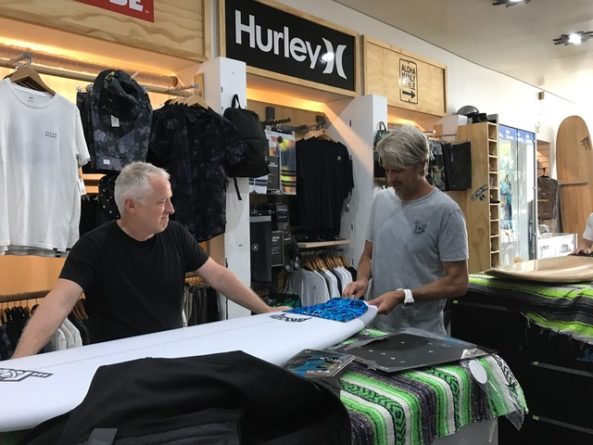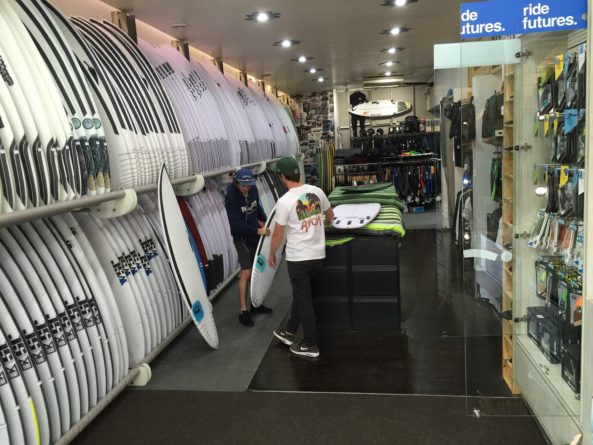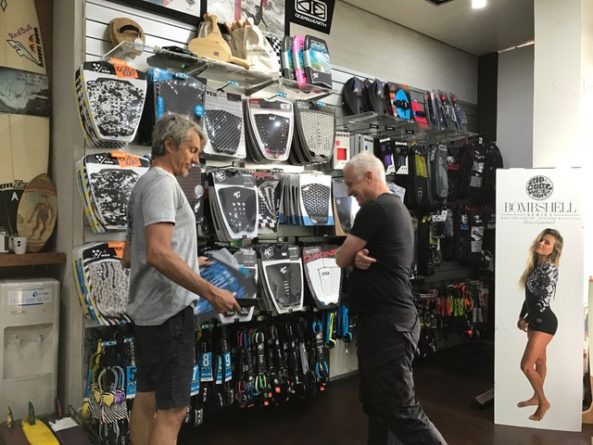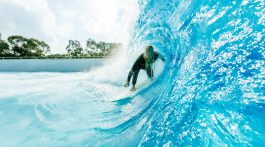A guideline on helping staff to sell boards more easily.
For many core surf stores, surfboards are an essential product, but it is a category that can tie up a lot of cash. To successfully sell surfboards, a store needs to carry a variety of boards that suit all types of surfers and all types of waves. That means you need to stock a lot of boards. Of course no one wants their profit to be sitting there in unsold inventory, so you have to move it and summer is the prime time for selling surfboards. Making sure the customer walks out with the right board is essential, because if they are stoked it is most likely that they’ll come back to your store for all their hardware needs.
To give you a few tips on how to make sure that happens, we’ve gone to someone who knows how to sell surfboards, Tim Hanrahan from Aloha Manly Style, someone who has been doing it for 25 years.

Ok folks, first up, you have to remember that customers come in all different shapes and sizes. Luckily, so do surfboards. Next, customers come with many different attitudes, as do shop staff.
Hence it is important to understand Rule number 1:
Remember, as hard as it can be sometimes, even if the customer is the most arrogant know-all you’ve ever met, you have to suck it all in and not react back. The worst way to try and sell someone anything is by starting out with a negative vibe. You have to become a chameleon and try to imagine being in their shoes, so try to be as similarly like-minded as them and conversation will flow less awkwardly. Believe me, this can be really tricky, however mastering this will achieve much greater results.
One thing we all must realise is that surf shop staff can often also have a bit of attitude and this can start out in the water at your store’s local break. Let’s face it, there’s nothing worse than paddling out somewhere and getting snaked, dropped in and hassled by a smart-arse grommet who thinks he’s cool because he works at the local surf shop. I can’t tell you how many times I’ve had to tune my staff on this and unfortunately it’s probably always going to happen. After all the line ups are definitely more crowded and waves are not as plentiful as they once were.
I’ll tell you right now, no one is going to buy a board off you after you’ve been burning them all morning.
Ok, now we have the humanitarian code of contact out of the way, it’s time for the more obvious methods on how to hook ‘em up.
“Next up, and probably the most significant, is to try and get a gauge on how well they surf.”

First up, find out what the customer is currently riding as it is a really important start to work out what their ability might be.
Secondly, find out their weight. A set of scales can help, however be cautious as some people are really sensitive about weight and some people consider it rude to ask. Next up, and probably the most significant, is to try and get a gauge on how well they surf. This is not easy and quite honestly you will never really know unless you’ve witnessed them surf.
However, you need to have a good idea and it is best to start by asking a few simple questions – how long have you been surfing? How old were you when you started? How often do you surf? Where do you usually surf? Have you done any surf travel etc.
Last up, ask them if they understand the volume measurement on the newer surfboard models. This can be a really handy tool, especially when selling some of the latest, crazy short fat wide models that some people can’t fathom riding.

Letting them know the volume of their current board is a great way to start things rolling. Obviously these first few points are most important, but there are many other contributing factors when choosing your customer the correct board.
Beginners and children need to start out bigger and wider, with more stability and flotation. As a surfer’s ability progresses we slowly reduce the volume of their boards.
The customer’s age and fitness are super relevant too, and one of the most common things to come up against when finding the right board for someone is an eternal grommet maturing into middle age. A lot of people want to hang on to their youth, but as we all know paddle fitness and stamina start to decline at a certain age, so don’t be scared to recommend a few extra litres of foam. Once again be careful, as many customers legitimately don’t need it while others are too stubborn to admit it. With these guys, don’t try and advise them on what you reckon, just give them a few sexy looking models you reckon they might like so they can check them out.
Choosing the right board for the customer first time gives them the confidence to return for the next one. Give ‘em the wrong one and you may never see them again.
And that my friends, is a wrap and how ALOHA MANLY STYLE has survived over the last 25 years,
Good luck, Timmy








